“All journeys have secret destinations of which the traveler is unaware.” ― Martin Buber
True that! Ethnic cities with vibrant streets, delicious food, architectural delights, and renowned attractions, Gujarat has a side that you might be unaware of.
Gujarat is truly an experience in itself. It will fill your heart with joy and your holiday with cherishable moments. Colorful festivals, unmatchable tours, delectable cuisine, and more.
Between these fun-filled adventures, Gujarat’s wilderness remains hidden. Yes! Gujarat is more to offer than just Undhiyu, Dhokla, Navratri, and Rann Kutch. It also offers you to rendezvous with the wild animals and stunning birds that will furnish you with a heart-touching experience for a lifetime.
So, delve into the rich flora and fauna of Gujarat and unfold the multi-layered wilderness hidden in these 8 Wildlife Sanctuaries in Gujarat.
Barda Hills Wildlife Sanctuary
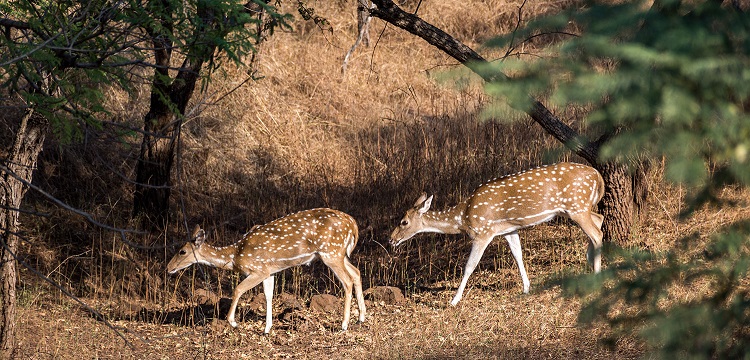
Once a private forest of the ex-princely state of Ranavav and Jamnagar, Barda Hills Wildlife Sanctuary is among the most celebrated sanctuaries of the country. It houses two significant rivers named Bileshvary and Joghri and Khambala and Fodera are its two main dams.
Did you know? The government took the initiative of preserving Asiatic in Barda Wildlife Sanctuary too.
You will get to see plenty of hilly pathways, natural creeks, and optimum flora and fauna. The sanctuary offers shelter to various mammals, birds, and reptiles. Hyena, wild, spotted deer, crocodiles, wild boar, Sambar, Chameleon, and Chinkara are some of the endangered species you can spot here. Moreover, it has the three most poisonous snake species in the country. Various stunning bird species can also be spotted at this sanctuary such as flamingos, hawks, spotted eagles, etc.
650 plants and tree species! It’s crazy! Babul, bamboo, Jamun, Ber, Dhundhlo, Rayan, Gorad, and more can be seen here.
Location: Ravno Nes, Gujarat
Best time to visit: October to February
Timings: Morning to Evening
Tickets: NA
Suggested Read: 25 Best Places to Visit in Gujarat
Hingolgadh Nature Education Sanctuary
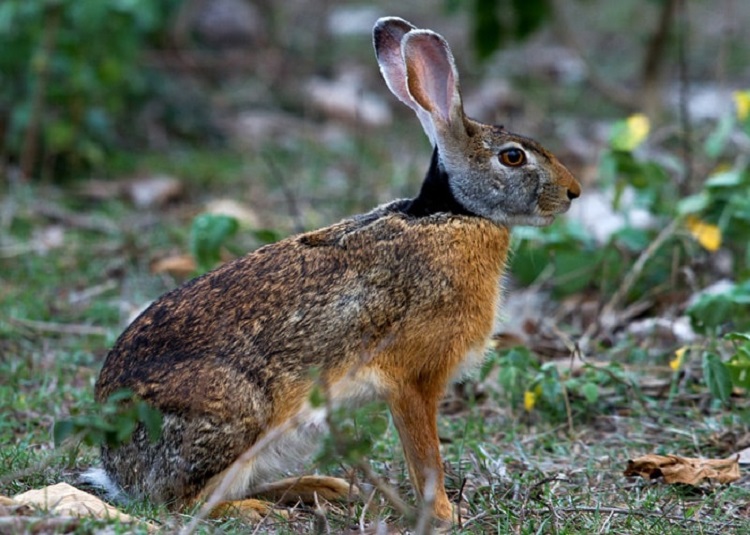
Nestled between rainfed arid land, this sanctuary is comparatively smaller to other ones in Gujarat. Hingolgadh Nature Education Sanctuary is a preferred habitat for Chinkara (blue bull). Along with this, it is home to numerous local and migratory birds. During monsoon season, the savannah lush grasslands mixed with the green forest brings out the best in this sanctuary.
Did you know? Hingolgadh Nature Education Sanctuary is administered by Gujarat Ecological Education and Research (GEER) Foundation. Education camps (around 50-100) are also organized by them every monsoon.
So, Hingolgadh Nature Education Sanctuary is not just another picnic spot but also holds an educational value.
Location: Jasdan-Ahmedabad highway, Taluka Vinchhiya, Post Amarapur, Rajkot District, Hingolgadh, Gujarat
Best time to visit: June to September
Timings: 8 am to 6 pm
Tickets:
- Adult: Indians – INR 10, Foreigners – INR 368
- Children (3 to 12 years): Indians – INR 2, Foreigners – INR 368
- Car, Jeep, Matador Car: Indians – INR 20, Foreigners – INR 368
- Minibus, Tractor: Indians – INR 50, Foreigners – INR 736
- Two and Three Wheelers: Indians – INR 10, Foreigners – INR 147
Kutch Bustard Sanctuary
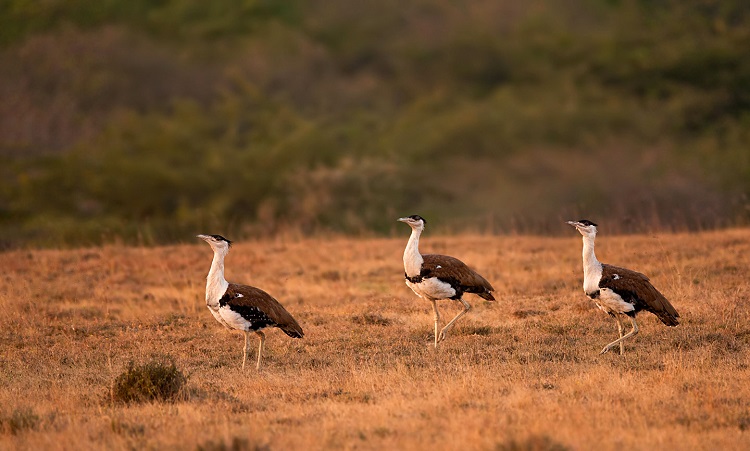
Nicknamed as ‘Kachchh Great Indian Bustard Sanctuary’, this sanctuary is located in a serene and quaint village. For those who don’t know, the Great Indian Bustard is considered one of the heaviest flying birds belonging to the avian family of Otididae. Moreover, this bird is commonly known as “Ghorad” in Gujarat as its height and weight match that of an Ostrich. Interesting, right?
Did you know? It was declared a sanctuary back in the year 1992 with the objective to conserve and protect the Great Indian Bustard.
Apart from the Great Indian Bustard, you can observe over 20 exotic bird species. Mc Queen’s Bustard, Stoliczkas, Merlins, Lesser Florican, and Bush Chats are some of the birds found here. Some of the majestic fauna found at Kutch Bustard Sanctuary include harriers, jungle cats, desert cats, and migratory birds.
Location: Jakhau, Gujarat
Best time to visit: October to March
Timings: Open on all days
Tickets: Free entry
Narayan Sarovar Sanctuary
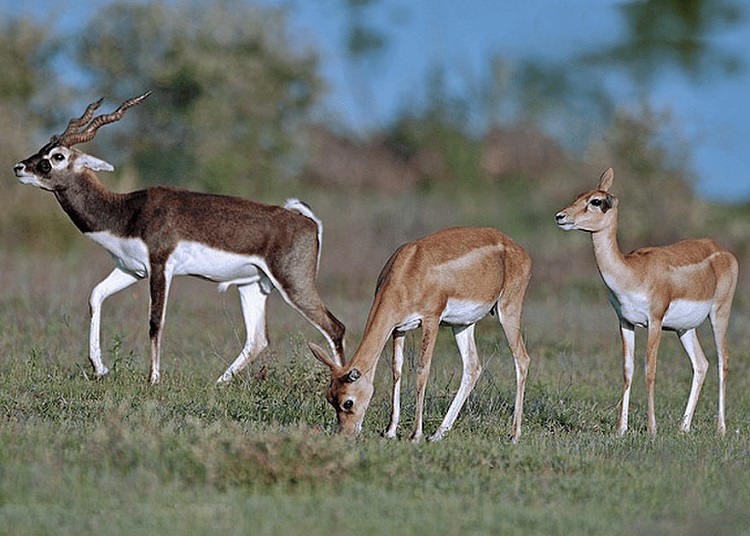
Narayan Sarovar Sanctuary is one of the popular wildlife sanctuaries in Gujarat.
Chinkaras are one of the major highlights of this sanctuary that people come here for. Along with Chinkara, you can also see wolves, feline family, foxes, cheetah, and pangolin.
However, the vegetation at this sanctuary is filled mostly with scrubs.
Did you know? The saline water underground stunted the growth of trees and winds and rocky soil worsened the growth.
Narayan Sarovar Sanctuary houses around 252 plants and tree species including Ogando bevel, cariso, and informal kendo. Hard and rough trees such as euphoria cactus, gored, and acacia can be seen here.
Not just this, you can spot bird species such as black partridge, Indian Bustard, the lesser floricans, dove, robins, raptors, francolin, and more.
Location: Mudiya, Gujarat
Best time to visit: December to March
Timings:
- Morning – 7 am to 1 pm
- Evening – 2.30 pm to 6.30 pm
- (Open all week, except on Wednesdays)
Tickets:
- Normal Days: Indians – INR 100, Foreigners – INR 350
- Weekends: Indians – INR 200, Foreigners – INR 500
- Vehicle Entry Permit: Indians – INR 1000, Foreigners – INR 1500
- Safari cost: Indians – INR 600, Foreigners – INR 1000
- Guide – INR 200
- Still camera – INR 100
- Video camera – INR 150
Ratanmahal Sloth Bear Sanctuary
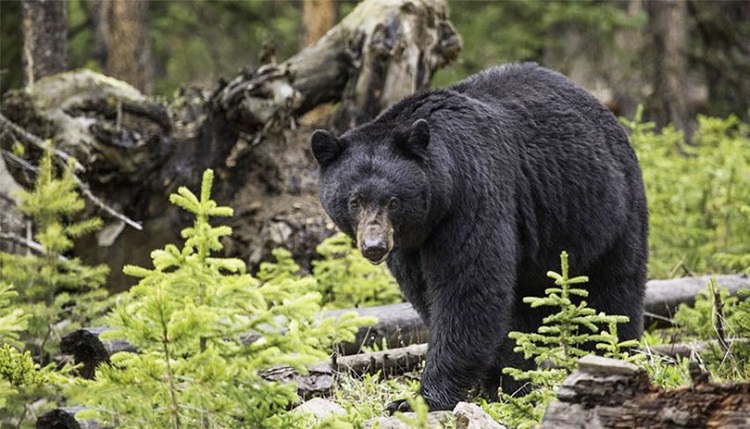
As the name suggests, Ratanmahal sanctuary is famous for its star attraction, sloth bears. The pristine beauty of this small topography offers the visitors a feel of a hill station. And the close-by tribal towns of Baria and Chhota Udepur are a unique opportunity to meet the locals. Therefore, all wildlife enthusiasts must visit Ratanmahal Sloth Bear Sanctuary in Gujarat.
Did you know? About one fifty hectares of land is presently under the Gujarat Irrigation Department.
Observing the behavior of sloth bears is quite an experience. Apart from these, leopards are a big attraction too. The forests also house dry teak forests at the foothills and deciduous forest with dry bamboo on its periphery. The high concentration of mahuda trees provides a favorite food to sloth bears.
Apart from this, spot around 147 terrestrial species like grey jungle fowl, quail, common blabber, crested serpent eagle, green pigeon, golden-backed woodpecker, tailor-bird, partridge, Alexandrine parakeet, and more. King cobra, Krait, python, common Indian monitor, and rat snakes are some of the reptiles found at this sanctuary.
Location: Kanjeta, Gujarat
Best time to visit: October to February
Timings: NA
Tickets: NA
Suggested Read: Things to do in Gujarat
Shoolpaneshwar Wildlife Sanctuary
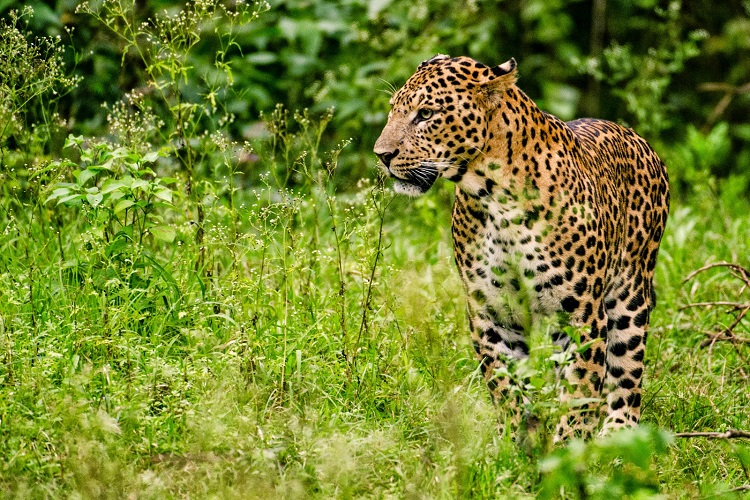
A massive wildlife sanctuary, Shoopaneshwar is mainly Gujarat but also has some parts in the state of Maharashtra. The sanctuary is thickly forested and has tribes living inside called Vasavas. Deciduous trees like mahuda, amaltas, teaks, and karanj can be found here. Besides this, it is home to 575 kinds of flowering plants.
A wide variety of wildlife can be explored at Shoolpaneshwar Wildlife Sanctuary. Have you ever heard or seen a flying squirrel? There are in abundance here. Apart from squirrels, sloth bears, pangolins, civet cats, wild dogs, porcupines, and leopards live here. If you love to observe reptiles, then visit to see pythons, lizards, and tortoises. Parakeets, eagles, hawks, owls, and more birds can also be spotted.
Did you know? A trek is organized at the Shoolpaneshwar Wildlife Sanctuary that can be enlightening as well as educational.
You can see how flora and fauna are interdependent on each other and also learn the value of ecosystems as well as saving green cover.
Planning a day trip is fine, but it will get stimulating if you stay a night at a campsite to get the real feel of the sanctuary.
Location: 57, Pandya Bridge, Near Pandya Hotel, Nizampura, Vadodara, Gujarat
Best time to visit: October and November
Timings: 24 hours open
Tickets: NA
Suggested Read: Best Historical Places in Gujarat
Thol Wildlife Sanctuary
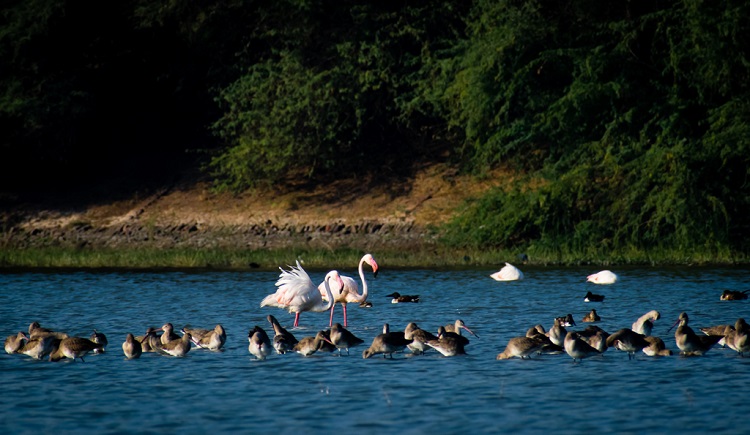
Thol Wildlife Sanctuary in Gujarat situated around Thol Lake. This Sanctuary features a shallow water body for dozens of birds that come here. Flamingoes and Sarus Crane are the highlighted birds of this sanctuary that you can spot as they are rare to find anywhere else. Other birds you can spot here include bulbuls, sandpipers, ibis, purple colored swamp hen, spoonbill, little ringed plover, snipe, green-colored shrunk, sunbird, and more.
Apart from this, mammals like striped hyenas, wolves, golden jackal, bluebell, and blackbuck also reside here. One of the main attractions of Thol wildlife sanctuary is its marshy plants. From soft to hard, you can find a wide variety of flower species.
Did you know? Thol Lake is a freshwater reservoir that was artificially built-inbuilt in 1912. At that time, India was facing a severe water crisis. And this lake was used for major irrigation purposes.
Plan a day trip to Thol Wildlife Sanctuary for a relaxing as well as wildlife adventure. The nature around you will instantly cheer you up.
Location: Thol Bird Sanctuary Rd, Thol Rd, Gujarat
Best time to visit: November to February
Timings: 6 am to 5.30 pm
Tickets: INR 50 per person
Suggested Read: Best Offbeat places to visit in Gujarat
Wild Ass Sanctuary
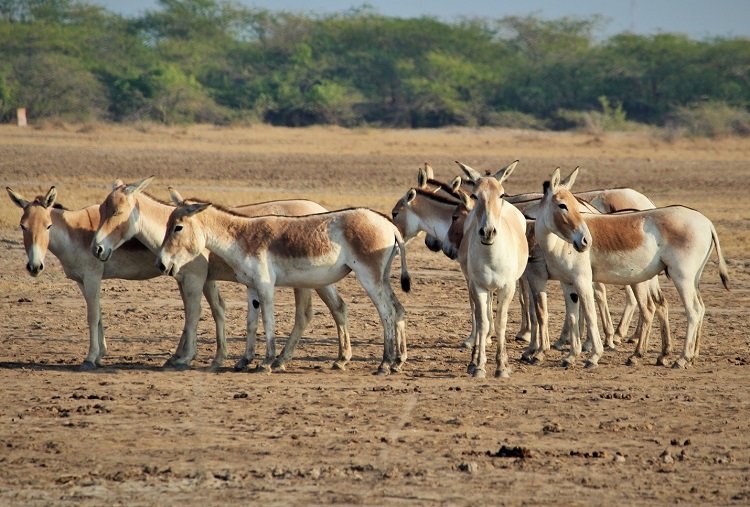
Take a trip to Wild Ass Sanctuary and see the last few of the wild asses while you can. Their homeland is threatened by the development of industries on the periphery.
Did you know? Wild Ass Sanctuary is home to about 4450 wild asses according to the 2015 census.
Unlike other sanctuaries, this arid lunar landscape of Gujarat covers Malia and Dhrangadhra in Kutch. It has diverse flora and fauna. Mesquite lives in the day areas but the plains are blooming with rich flora. This sanctuary has about 253 flower species, 23 shrubs species, 18 climbers, 157 unique herbs, and 37 types of grasses. Isn’t that insane? You can also find 107 species of algae here.
From frogs and toads to mollusks and crustaceans, and from spiders to insects, there is a lot here to keep you fascinated. Wild Ass Sanctuary has 29 reptile species including lizards, turtles, snakes, and crocodiles.
Plan a visit to this sanctuary to view over 75,000 birds’ nests that reside in an area of 250 acres as well as migratory birds.
Location: Old Officers Colony, Dhrangadhra, Gujarat
Best time to visit: October to March
Timings:
- Morning: 7 am to 1 pm
- Evening: 2.30 pm to 6.30 pm
- It is closed on Wednesday.
Tickets:
- Normal Days: Indians – INR 250, Foreigners – INR 280, Vehicle Entry Permit – INR 1000
- Weekends: Indians – INR 280, Foreigners – INR 1500, Vehicle Entry Permit – INR 1500
Kutch Desert Wildlife Sanctuary
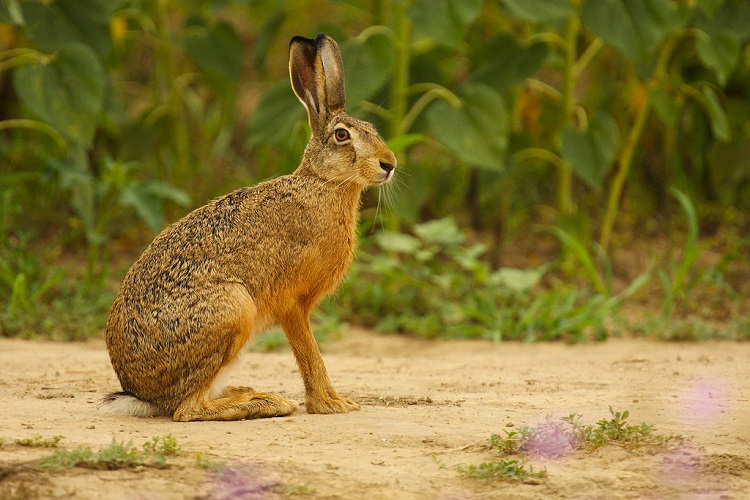
With an area of 7506.22 sq. km, Kutch Desert Wildlife Sanctuary is the biggest wildlife sanctuary in Gujarat. It was declared a sanctuary in 1986. This is a true saline desert where you can see thousands of Flamingos nesting and breeding in the renowned ‘Flamingo City’.
Did you know? The long-lost city of Dholavira of Harappan civilization was excavated here. This is the reason why this sanctuary attracts so many archeologists here from all across the world.
This wildlife sanctuary has one of the largest seasonal wetland areas but as soon as October arrives, the water dries up and turns into saline desert. Here, you may spot spiny-tailed lizards, Chinkara, fox, hyena, and nilgai in abundance. Some migratory birds can also be spotted like raptors and Houbara bustard.
Location: Great Rann of Kutch, Kutch District, Gujarat
Best time to visit: Winter
Timings: 6 am to 6 pm
Tickets:
- Weekdays: Indians – INR 250, Foreigners – INR 1200
- Weekends: Indians – INR 280, Foreigners – INR 1500
- Camera: Indians – INR 50, Foreigners – INR 350
Gir Wildlife Sanctuary & National Park
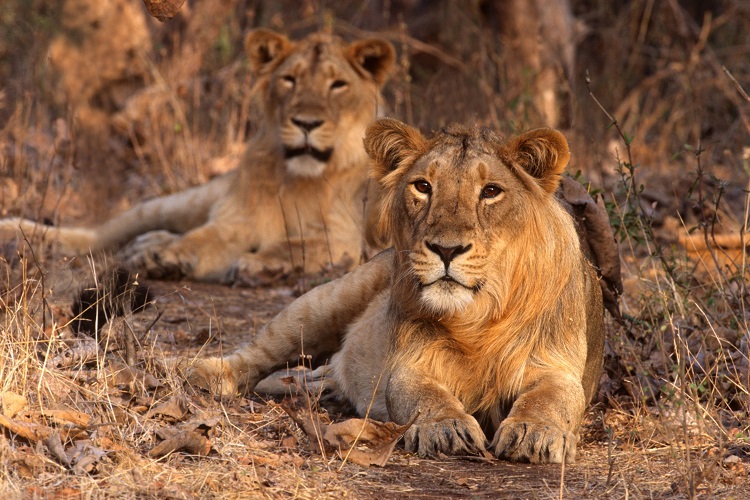
One of the most known national parks in Gujarat is in Gir. The entire forest area is covered in dry and deciduous forests, which provides a perfect home to Asiatic lions. Besides, the two animals the wildlife sanctuary is home to are different species of deer.
Did you know? Gir Wildlife Sanctuary & National Park is the only place in the world where lions roam freely in the wild.
Sambar can also be seen and is the largest Indian Deer. Gir National Park also provides a home to Chousingha – the world’s only four-horned antelope. It will be an interesting journey to explore Gir Wildlife Sanctuary. So what are you waiting for? Grab your ticket and visit Gujarat to watch Jackal, striped Hyena, and India Fox in their natural surroundings.
Location: Sasan Gir, Junagadh, Gujarat
Best time to visit: Mid-October to Mid-June, December to April
Timings:
- Safari Timings (Gir Jungle Trail): 6 am to 9 am, 8.30 am to 11.30 am, 3 pm to 6 pm
- Jeep Safari Timings:
- Winter (16th Oct to 28th/29th Feb) (Mon to Sun): 6.45 am to 9.45 am, 3 pm to 6 pm
- Summer (1st Mar to 15th June) (Mon to Sun): 6 am to 9 am, 4 pm to 7 pm
- Winter/Summer (Mon to Sun): 8.30 am to 11.30 pm
Tickets:
- Indians: INR 4500/ Jeep (max. 6 persons allowed at one time)
- Foreigners: INR 13800/Jeep (max. 6 persons allowed at one time)
4 Nights / 5 Days Gujarat Wildlife & Heritage Tour Package
Balaram Ambaji Wildlife Sanctuary
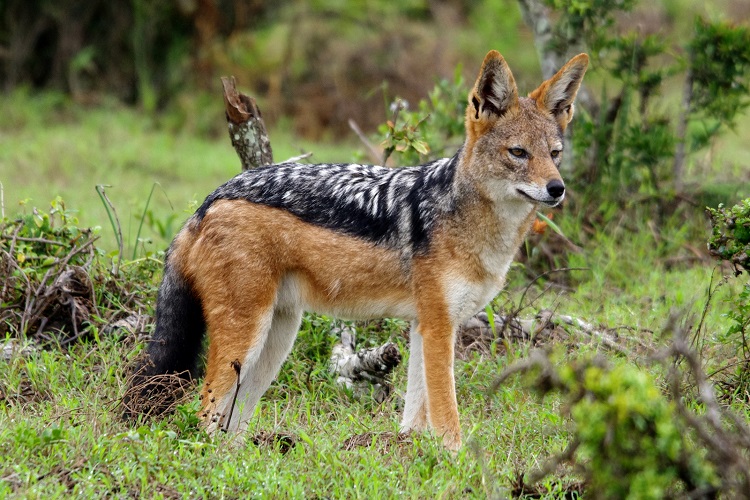
Surrounded by the undulating hills of Aravali, Balaram Ambaji Wildlife Sanctuary is one of the beautiful wildlife places in Gujarat. If you are a wildlife enthusiast, you must visit this place. Not known by many, this wildlife sanctuary has rich floral diversity, specifically medicinal plants. Plus, you can see floral and faunal species of global conservation importance.
Did you know? On 7th August 1989, the Government of Gujarat constituted the area as a wildlife sanctuary with the aim of protection, propagation, and development of wildlife and its environment.
Some rare flora found here are Kadaya, Gugal, and Musali. During late winters i.e. February to March, Khakhara, the flame of the forests, which is known by names like Palash and Tesu, blooms during this time and is a beautiful sight to behold.
Apart from this, some animals you can witness here include striped hyena, bluebell, porcupine, fox, small Indian civet, Indian pangolin, and a number of reptiles. And bird species include adjutant Stork, spoonbill, white-backed vulture, and black vultures.
Location: Banaskantha, Gujarat
Best time to visit: November to March
Timings: NA
Tickets: NA
Marine National Park & Wildlife Sanctuary

Declared as a national park in 1980, Marine National Park and Sanctuary is blessed with a wide variety of habitats, coral reefs, and mangrove vegetation. This is one of the most beautiful wildlife sanctuaries in Gujarat and is a treasure trove of colorful corals, sponges, giant sea anemones, sea horses, jellyfish, pearl oysters, starfish, dolphins, sharks, and more underwater creatures and plants.
Did you know? There is also a series of 42 islands that form a unique, fragile ecosystem, which supports marine life and biodiversity.
The habitats in this Gujarat wildlife sanctuary support fishes, birds, reptiles, and other life forms. Also, the coral reefs and mangroves found in this sanctuary are of conservation importance. They are the most fascinating things of all marine life found in a compact place in India. And special measures are taken to take care of these to maintain the dignity of being the first marine national park in India.
Location: Jamnagar, Gujarat
Best time to visit: October-end to February-end
Timings: Opens at 9 am
Tickets: Indians – INR 100, Foreigners – INR 650, Guide – INR 300, Camera – INR 200
Jessore Sloth Bear Sanctuary
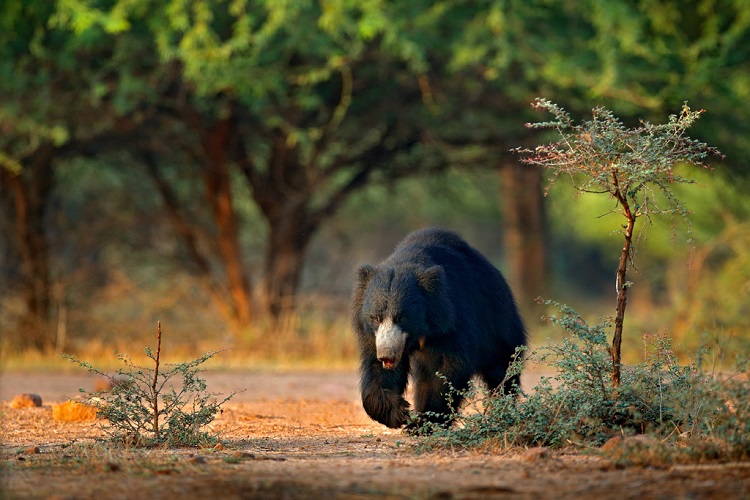
Lying in the Jessore hills of the Aravali range, Jessore Sloth Bear Sanctuary in Gujarat covers an area of 180 sq. km of dry deciduous forest. Apart from the main animal sloth bear, there are many other animals found here. Some of them are leopard, blue bull, porcupine, wild boar, birds, etc. Endangered animals can also be spotted here like civets, jungle cats, wolves, hyenas, and caracals.
Did you know? This wildlife sanctuary in Gujarat has identified 406 species of plants.
Jessore is the second highest hill in Gujarat. It is perfect for jungle trekking. If you are an adventurer, this is one of the best wildlife sanctuaries to visit in Gujarat. The forest of this place also provides a home to land and water birds. As per the IUCN classification, many rare and endangered bird species are found here. Snakes, tortoises, and lizards can also be seen along with the rarest Indian Python.
Location: Banaskantha District, Gujarat
Best time to visit: Post monsoon to winter
Timings: 6 am to 6 pm
Tickets: NA
Purna Wildlife Sanctuary
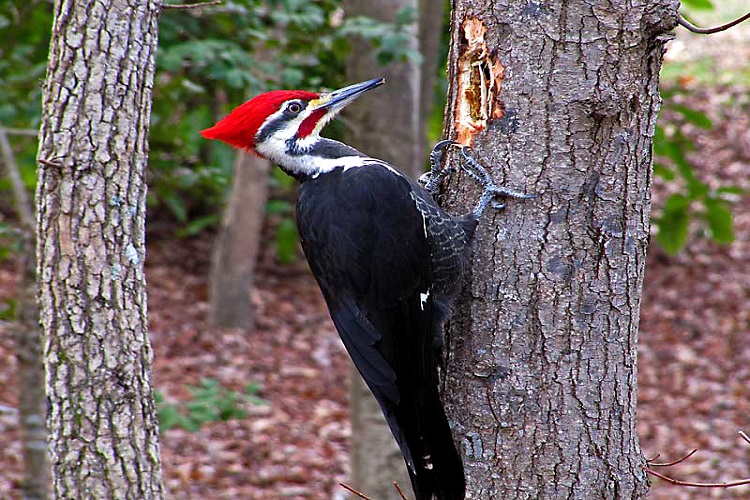
Spread over an area of 160.84 sq. km, Purna Wildlife Sanctuary has an undulating terrain with plateaus, rolling hills, and small valleys. Unlike most areas of Gujarat, this area receives heavy rainfalls with an average annual rainfall of 2500 mm. The forests have tall teak trees and have many flora like khair, kalam, haldu, sisham, slaai, kadaya, killai, sevan, and ore. Bamboos are the ones that grab the most attention the most.
Did you know? The area houses tribal villages like Bhils, Dubdas, Kolchas, Warlis, and Konkanas.
The rich tribal culture is a major attraction here and can be seen in the form of dresses, agriculture, houses, jewelry, fishing, musical instruments, folk dances, etc. And once the sun goes down, you can hear the distant sounds of folk songs and musical instruments like Pavry and drums.
Location: Jamlapada, Gujarat
Best time to visit: October to February
Timings: 9 am to 6 pm
Tickets: Entry – 20 per person, Car / Jeep (Upto 6 persons) – INR 200, mid-size vehicle – INR 500, Bus – INR 1750, Guide – INR 300
Is the wildlife enthusiast awakened? Probably yes! Then, do not wait further. Plan out a route and visit Gujarat to explore the rich and abundant flora and fauna. These wildlife sanctuaries are truly wonderful to visit not only to answer your call of the wild but to learn more about our Indian flora and fauna species.
[Browse through wildlife tour packages in India ]
Related Posts:
Wildlife Sanctuaries to visit in India in Winter
Top Wildlife Sanctuaries in North East India
Wildlife Tour India – Tour the territory of wild animals
Wildlife Safari at Desert National Park – Jaisalmer
Top 10 wildlife resorts near Bandhavgarh National Park
Top 10 Wildlife Sanctuaries in Karnataka

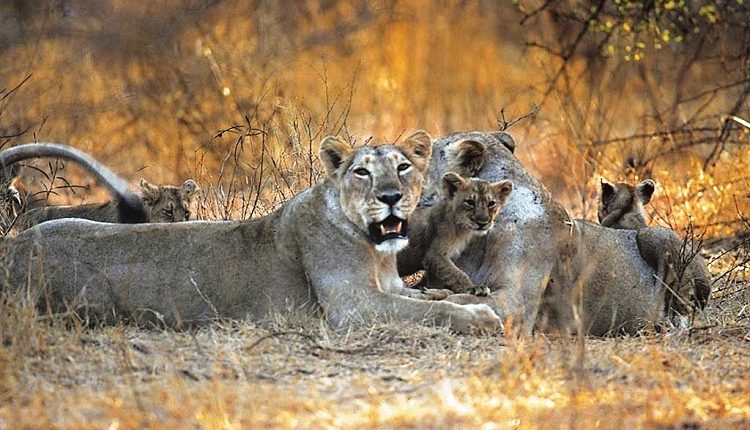

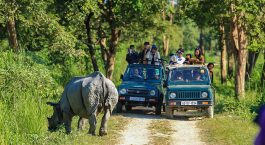

Leave a Comment